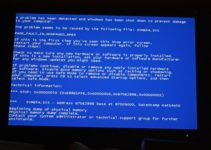Malware Eliminating Tool, the abbreviation for which is MRT.exe, is a perfectly legitimate desktop application. Because of the resources it uses to perform numerous tasks, this software would cause a significant increase in CPU and Memory usage.
For the Microsoft Windows operating system, the very first Ms Removal Utility was released by Ms in the year 2005. There are a few reasons why the mrt.exe system can be using so much CPU power. Microsoft’s Mrt.exe (Vindictive Application Eradication Utility) is a Windows-only remediation application.

The fact that mrt.exe is running in Device Manager does not necessarily mean it is a danger. Consequently, software updates are performed on the Hazardous Program Elimination Toolkit on a monthly basis (in the Tue upgrade of each month).
Once an upgrade has been made, the utility in question does not work as it was intended to.
Read Also:
What is MRT.exe?
MRT.exe stands for Malicious Software Removal Tool, a utility developed by Microsoft to help users combat malware infections on their Windows-based computers.
It is a built-in tool that comes pre-installed on Windows operating systems and is regularly updated by Microsoft to detect and remove prevalent malicious software, including viruses, worms, trojans, and other forms of malware.
Why Do I Need Mrt.Exe?
For the Ms Removal Toolkit, the abbreviation is MRT. This is what MS calls the toolkit, though: The Desktop Dangerous Program Removal Toolkit. According to File.net, it’s a Microsoft software application. The Ms Removal Toolkit relies on this mrt.exe package to get things done.
Failing that, File.net recommends removing it off the desktop if users are having issues with it despite its non-essential status. The virus-monitoring programme, which was first released for Microsoft Windows in 2005, is primarily used for this purpose.
According to File.net, if you enable Desktop Automated Upgrades, the Ms Remediation Toolkit will be downloaded and installed on the second of every 30 days.
Anti-malware programmes like Norton and AVG can’t be used in place of a specialised anti-malware programme like this one, but it’s usually a little programme that doesn’t cause many problems for consumers.
Functionality of MRT.exe
1. Malware Detection
MRT.exe operates by scanning the computer’s file system, registry, and memory for signs of malicious software. It uses a database of known malware signatures and behavioral analysis techniques to identify and classify potentially harmful programs.
2. Malware Removal
Upon detection of malware, MRT.exe takes action to quarantine or remove the malicious files from the infected system. It may also prompt the user to take additional steps to mitigate the threat, such as restarting the computer or performing a full system scan.
3. Periodic Updates
Microsoft releases new versions of the Malicious Software Removal Tool on a monthly basis, typically on the second Tuesday of each month, also known as “Patch Tuesday.” These updates include the latest malware definitions and detection algorithms to ensure that MRT.exe remains effective against emerging threats.
MRT.exe’s Memory and CPU Usage Issues
Only once a month does Microsoft deliver its Tue update, which means the Hazardous Program Remover Utility operates, and you may see Excessive Cpu Usage as a result.
If that’s the only time MRT.exe uses CPU cycles, there was no need to be concerned. However, if MRT.exe is constantly eating Computational power and RAM, this is a warning sign.
1. Remove Mrt.exe Files
The official Wins Malicious Program Remover Toolkit can be found in C:Windowssystem32. You can’t trust any other version of MRT that has been found to be infected with malware or adware. Remove any mrt.exe apps that aren’t in C:Windowssystem32 as your first order of business.
Simply put, the steps to identify and remove mrt.exe malware packages are as follows:
Step 1: Press E while holding the Wins button down, and you’re done.
Step 2: Hold down the control button and press the F key.
Step 3: After you’ve typed mrt.exe, press Enter.
Step 4. Wait for the computer to begin looking for something that resembles what you’ve written in Step 3.
Step 5: A perfect world would yield only one mrt.exe result from the search. Open folder option is available if you truly want to see more of a document.
When you right-click on an object, select Remove from the context menu. The procedure was performed for all mrt.exe files except for one in C:Windowssystem32 (if you still have any).
Step 6: Assist in keeping the C:Windowssystem32 folder intact. The address of the paper is, in fact, required to be included beneath these (inside the search outcome ).
The Task Manager can be accessed by holding down Control, SHIFT, and Esc at the same time. Pick the mrt.exe process that is running on your computer. Finish the task by selecting the Finish option. After that, repeat the steps and make another try at erasing the document.
After that, no one should be bothered by mrt.exe’s excessive use of CPU resources. However, experts recommend that users follow the guidelines in approach 2 to guarantee that your controls are effective.
Please keep in mind that if users continue to receive the notice “MRT cannot be identified” after removing the file mrt.exe, try the following:
Step 1:The first step is to obtain the identical Autoruns from https://docs.microsoft.com/en-us/sysinternals/downloads/autoruns.
Step 2: Unzip the archive (you’ll need WinRAR for this) and run mrt.exe from the directory where it was extracted. Locate mrt.exe within the Logon code’s directory. If users are unable to locate mrt.exe in this section, they should look in the General category.
Step 3: Select Remove from this listing’s context menu and then click OK. Additional requests should be confirmed before they are made. Users should have gotten an additional mrt.exe-related alert after completing Step 4.
2. Scan Your Computer
You know your system has been infected if mrt.exe is constantly running. However, if the guidelines in approach 1 are followed, a comprehensive cybersecurity tool should be used to assess the system.
Malwarebytes is a wonderful antispyware tool if you’re not sure which one to use. Clicking online will allow you to download Malwarebytes for Windows. When Malwarebytes has been launched, you can use it to inspect any system.
Integration with Windows Security
MRT.exe is seamlessly integrated into the Windows Security ecosystem, complementing other built-in security features such as Windows Defender Antivirus and Windows Firewall. It can be accessed and managed through the Windows Security app, providing users with a centralized interface for monitoring and managing their system’s security status.
Impact on System Performance
Despite its essential role in combating malware, MRT.exe operates in the background with minimal impact on system performance. It runs as a scheduled task at predetermined intervals, typically during off-peak hours, to minimize disruption to the user’s computing experience.
Is MRT.exe Safe?
MRT.exe is a legitimate system utility developed by Microsoft and is safe to use. However, it is essential to ensure that you are running the official version of the Malicious Software Removal Tool obtained from Microsoft’s official website or through Windows Update.
Beware of counterfeit or malicious versions of MRT.exe distributed by unauthorized sources, as they may pose a security risk to your system.
Read Also:
Conclusion
We assume that our readers are already familiar with MRT.exe, and hence are able to deal with this awful issue. Because we went to great lengths to make sure our technology was understandable to everyone, we think you’ll benefit from reading our writings.
Even though disabling mrt.exe would not cause any harm, users should wait until their system is suffering a mrt.exe error before doing so.


